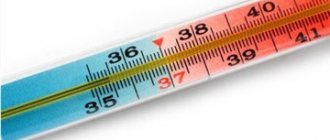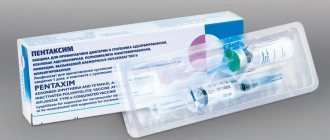Vaccination is a necessary measure. And this is the only way to protect your baby from various infections. And since any immunization is, in fact, an artificial (albeit small) infection, the child’s body is forced to fight it.
DTP vaccination is not the most pleasant procedure; moreover, it is a complex drug that protects against several diseases at once. Therefore, the immune system must “try” to cope with the infection. After DPT vaccination, redness is perhaps the most common reaction of the body to injected pathogens. But should we be afraid of this?
Redness on the skin after vaccination
Young children often experience a reaction to vaccinations. The area where the vaccine was administered may turn red. A tumor often appears. Some guys develop small rashes on the skin after the injection, and the redness is so great that it’s scary in appearance. All this is due to a completely natural reaction of the body to the administered drug. The situation is normal, so no need to worry. Mom just needs to take some measures, but not worry or scare the baby. You should remember the signs that are quite natural after vaccination.
The degree of reaction to the vaccine
First of all, parents need to determine the degree of reaction to the vaccine after the injection and the level of severity of symptoms. We will now look at three types of signs characteristic of an organism subjected to vaccination. Medical professionals identify mild, dangerous and moderate reactions.
- With mild side effects, after an injection in the buttock, leg or shoulder, redness and swelling may be observed. The skin itches, so many children start scratching this area. As a result, the tumor increases, irritation increases, and the area of the reddened area becomes larger. But this is not caused by the vaccination itself, but by the subsequent actions of the baby.
- Moderate reactions after vaccination may be as follows. The baby complains of a slight headache, nausea, and sometimes feels dizzy. There is swelling at the injection site and the skin turns red. If the vaccine was injected into the buttock, the irritation is even greater, and a rash is likely to appear, since the injection site is more often in contact with surfaces, clothing, and the skin is rubbed. When the reaction is moderate, there is a slight increase in temperature and a set of other signs, it is advisable to visit a doctor just in case. He will accurately determine whether these reactions are dangerous to the baby’s health.
- Dangerous signs are also possible. Most often, after vaccination, the reaction becomes critical for the child’s body due to his individual intolerance to a particular vaccine, which is quite difficult to identify in advance. Such cases are very rare in medical practice. In addition, if measures are taken in time, a dangerous reaction to vaccination will also not pose a threat to the health or life of the baby. If the following symptoms are observed, you must immediately consult a doctor, call an ambulance urgently: sharp headaches, severe dizziness, when coordination is already impaired, a rise in temperature above 38 degrees, a large tumor with redness and hardening at the injection site, swelling of half the handle or legs, entire buttocks. All this is not critical to your health if you call the doctors in a timely manner.
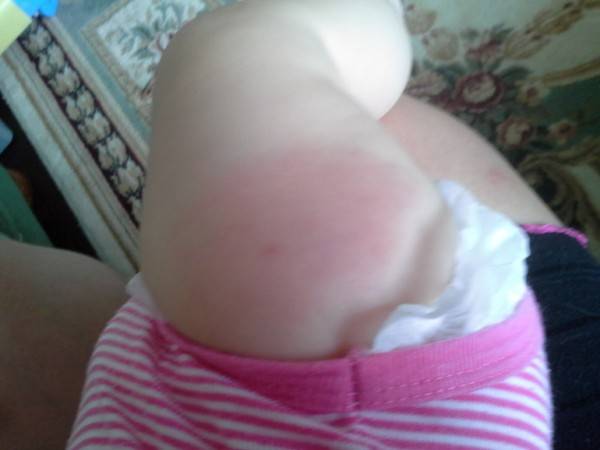
Remember! It is important! Specialist giving vaccinations for 14 years, o
Which vaccines usually cause side effects?
It will be useful for you to remember which vaccinations most often cause all sorts of adverse reactions at the vaccination site after the injection.
Remember! Here is what a pediatrician with 24 years of experience says: “When they tell you which vaccinations are more likely to cause side effects, this does not mean that such vaccinations can not be done at all. Vaccination is mandatory! Do not be afraid of side effects, because they are simply insignificant compared to what can threaten a child who has not been vaccinated. Be sure to treat vaccination with the utmost responsibility. Get the full range of vaccinations. This will protect your baby from health problems in the future.”
Let's look at which vaccines cause side effects most often. These are the following vaccines:
It is these vaccines that include substances that are specifically used to maximize immunity. They should cause a sharp reaction in the body. They provoke inflammation, in the process of fighting which the body produces a sufficient amount of antibodies to strengthen the immune system.
Most often, the maximum level of side effects is achieved within two days after the injection. Visually, the reaction can be observed at the site where the vaccination was given.
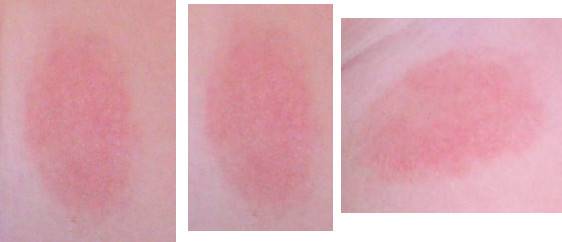
This is interesting! A pediatrician says: “Think about the essence of your child’s reaction to the vaccine. When the skin at the injection site turns red, there is swelling and hardening, this primarily indicates that the child’s body is giving the desired response to the vaccine, and his immune system is strengthening. So don't worry. Be sure to get all vaccinations up to date. Only by doing this will you save your baby from serious illnesses in the future.”
Redness appears after a day
As a rule, the reaction to the vaccine appears on the first day, but sometimes such changes can be observed only the next day. Their appearance is due to the immune response and the production of antigens. Also, similar symptoms are observed when the doctor’s recommendations regarding the post-vaccination period are not followed.
Walking immediately after the vaccine is administered can cause problems.
Redness also appears if the child was bathed on the day of immunization.
To avoid unwanted consequences, it is extremely important to properly prepare for vaccination and follow all the rules that must be followed after vaccination.
Redness and thickening after vaccination: Komarovsky
Pediatrician Evgeny Komarovsky also calmly reacts to such complaints from parents. Pain, swelling, redness are classic post-vaccination reactions that do not pose any danger.
Komarovsky clarifies: nothing needs to be done in this case. Just make sure that the child does not scratch the injection site and avoid any impact on it (compression and friction with clothing, mechanical damage, etc.). After a few days, the inflammation will go away. But be prepared for the fact that sometimes the process drags on for several weeks or even months. However, if the child’s general condition is satisfactory, then there is no reason to worry. And in order not to worry without reason in the future, Komarovsky advises parents, before vaccination, to study information about the vaccine being administered: its manufacturer, technique and rules of administration, required preparation, likely consequences. All responsibility for the child’s health lies with the parents, the pediatrician sums up.
Is it normal to have redness?
The body's response to vaccination is most often insignificant. In this case, the injection site becomes red and thickens. Fever, cough and gastrointestinal disorders are also possible. Thus, the immune system reacts to the administered drug and begins the synthesis of antibodies.
The body's response in the form of redness is considered normal. Such changes are caused by the fact that the tissue at the puncture site begins to swell. The size of the discolored area of skin can reach up to eight centimeters in size.
Why does the injection site on a child’s leg become red, swollen and hard?
This is often diagnosed after the introduction of Pentaxim. Not only the thigh where the drug is injected may become swollen and red, but also the entire leg.
There is no need to be afraid of this situation, since each child’s immunity is individual and copes with the infection to the best of its ability.
For this reason, one baby may experience severe redness of the skin, while another may not have it at all. But in any case, such symptoms are considered normal, since they confirm that the body has launched an “attack” on pathogenic organisms, forming a specific defense against them - immunity. And this is the goal of any vaccination.
Even if the injection site is red and swollen, but the baby steps on the leg - this is a normal reaction. You should only worry if the redness does not subside, but, on the contrary, increases in size, exceeding 7-8 cm in diameter, and the injection site swells and hurts.
If the baby has difficulty walking and limps, this is already a complication. What's going on? It's all about the slow resorption of the injected vaccine. Lameness will go away as soon as the infiltrate dissolves in the tissues. This may take 7-8 days.
If the swelling and redness are severe and the leg is hot to the touch, immediately show the baby to the surgeon. Don't treat yourself. Coordinate therapy with your local pediatrician.
What is prohibited to do
- If the vaccination site is very red and itchy, the child may try to scratch it with his hands. You can't do this! Cover the leg with clothes, watch the baby's hands.
- Redness should not be heated: this will aggravate the inflammatory process. It is allowed to apply a compress of ice wrapped in a cloth to the vaccine for a few minutes. This will stop the inflammation from spreading throughout the body tissue.
- What else can’t be done with the vaccine? You should not put tight-fitting tights or panties on your baby: this will irritate the inflamed skin.
- Do not rub the inflamed area with a washcloth while bathing: you can contaminate the wound and cause an infection. If the wound begins to fester, you should immediately take the baby to the pediatrician for an examination: it is important not to miss the onset of abscess formation.
Treatment
What to do if the injection site on your leg is swollen?
If induration and redness are within 1 cm, the temperature is not higher than 37.5°C, and there is no swelling or inflammation, special treatment is not required.
To alleviate the child’s condition, the following must be done:
- stop taking vitamin D if your baby was taking it before vaccination;
- give the child more to drink, food should be moderate;
- on the first day after vaccination, cancel walks;
- exclude contact of the injection site with water, do not bathe the child for several days;
- you can apply a mesh of iodine to the seal;
- make a gentle massage, without pressing on the seal, using circular movements;
- smear the problem area with special ointments, having previously agreed on the drug with the doctor;
- carefully monitor the baby's condition.
Ointments for compaction and redness
Medications should be used after consultation with a pediatrician and determining the cause of the lump. The baby's condition will improve significantly if you apply medicinal ointment around the sore spot. Pharmaceuticals offer many special ointments to eliminate bumps after DTP vaccination:
- Troxevasin - reduces redness, promotes the resorption of pus, is used if a needle gets into adipose tissue;
- Aescusan - improves blood circulation, accelerating the absorption process of the vaccine and reduces compaction;
- Fenistil - eliminates itching and pain, the seal on the leg resolves;
- Heparin ointment - relieves pain and compaction; Vitaon balm has a similar effect.
These medications are publicly available, however, they should not be used independently without consulting a specialist. Only a doctor can answer how much of the drug can be used at a time for a child, and why this particular medicine should be chosen in a particular situation.
Other drugs
If complications occur or if the lump does not disappear for a long time after vaccination, the doctor may prescribe additional treatment:
- for allergic reactions - antihistamines Fenistil, Zodak, Zyrtec;
- in the presence of an inflammatory process - antimicrobial drugs;
- at high temperatures - antipyretics Nurofen or Paracetamol.
Is it possible to use folk remedies?
Traditional medicine has many ways to help a baby after vaccination. It should be noted that the use of unconventional means is not recommended without consulting a pediatrician, since inept manipulations can cause significant harm to the baby’s body, weakened by vaccination.
Parents should know for sure whether the child is allergic to the product that is supposed to be used for medicinal purposes. For example, using honey to dissolve a lump if the baby is allergic to honey can lead to serious consequences.
The safest traditional methods of treatment are:
- Cabbage leaf compress. Puncture or cut a thoroughly washed cabbage leaf in several places, pour boiling water over it, apply to the sore spot and cover with parchment. Leave the compress for 3 hours. You can carry out the procedure during daytime sleep. This method is considered effective in reducing redness and swelling.
- Soda lotions. Dilute a tablespoon of baking soda in 100 g of boiled water. Soak a gauze pad in a soda solution and apply to the seal. The lump will shrink.
- Mix the yolk of a chicken egg, a small amount of honey, flour and a tablespoon of butter. Apply the resulting dough to the seal.
- Lubricate the grafting site with aloe juice. It's better to do this in the morning. Aloe compress dissolves cones well and has an anti-inflammatory effect.
DTP vaccination is a serious test for the baby’s body (we recommend reading: what to do if your leg hurts after DTP vaccination?). He will have to overcome the introduced, albeit weakened, viruses and form immunity against deadly diseases. The task of parents is to prepare for vaccination in advance, consult with a pediatrician and stock up on the necessary medications in case of complications.
It should be remembered that vaccinations can only be done when the child is completely healthy. Strict compliance with all pediatrician’s instructions after vaccination and careful monitoring of the child’s condition are mandatory.
Pediatrician, allergist-immunologist, graduated from Samara State Medical University with a degree in Pediatrics.
Share with friends!
Source: www.deti34.ru
Helping a child with a pronounced reaction of the body to DTP
To reduce the unpleasant symptoms that occur after vaccination, you can use the following options to help your child:
- get a massage;
- apply a compress to the injection site;
- smear the leg in the place where it is swollen with a special ointment.
Ointments and gels to eliminate bumps and redness
If after vaccination a child’s temperature rises above 38.5°C, the redness intensifies and the leg is very swollen, you can anoint the sore spot with Troxevasin gel or make a compress with novocaine. This will eliminate redness and ease pain. Also give your child the antipyretic medicine Nurofen or Paracetamol in syrup form. You can use a rectal suppository with paracetamol.
If the compaction that appears after DTP does not go away, in addition to the indicated drugs, the following remedies can be used:
- for allergic itching, swelling and redness, infants will benefit from Fenistil in drops, for babies over 1 year old - 5 drops of Zyrtec 1-2 times a day, and for children over 2 years old - Claritin syrup, a teaspoon once a day;
- Aescusan ointment and Troxerutin gel improve blood circulation and accelerate wound healing;
- Rescuer ointment reduces inflammation and resolves bumps;
- Heparin ointment enhances tissue microcirculation and relieves swelling.
Other ways to combat post-vaccination reactions at home
Often parents, when a child develops an infiltrate at the injection site, resort to folk remedies:
- Cottage cheese compress. The product should be heated in a water bath, wrapped in soft cotton cloth and applied to the seal until the curd cools.
- Honey compress. Heat the honey, add the egg yolk and a little olive oil. Mix everything, form a cake, wrap it in cotton cloth and apply it to the pine cone, covering it with parchment on top.
- Cabbage leaf. Apply to the infiltrate before going to bed.
- Compress made of honey and flour. Mix heated honey and rye flour in equal proportions. Make a cake and apply it to the seal before going to bed.
- Soda compress. Dilute a teaspoon of soda in a glass of warm water, moisten a cotton handkerchief in the soda solution and tie it to the swelling until the bandage dries.
Is it normal to have soreness and tenderness in your arm after a flu vaccine?
The flu shot turned red, why? This reaction to vaccination is not uncommon and can occur in both children and adults.
Immunization is an excellent preventive method that can protect a person from viral exposure. By introducing a vaccine into the human body, the immune system becomes familiar with pathogens, which provoke the development of the disease. Vaccination is a training-type fight, after which the immune system remembers the sequence of actions, and, during the actual penetration of the influenza virus into the body, it uses its knowledge to fight it.
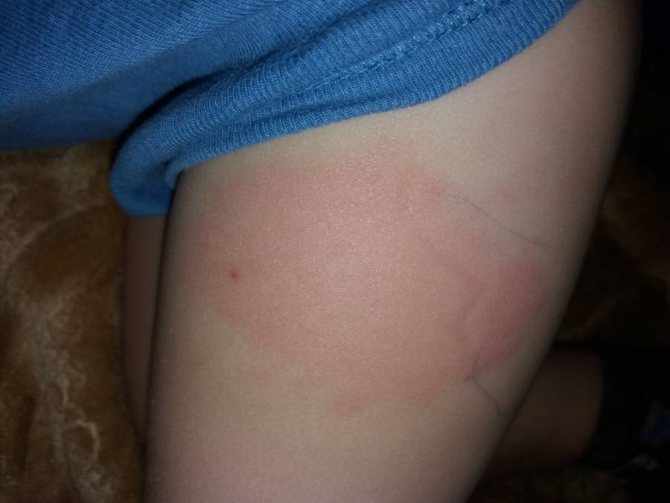
There are a number of vaccines, each of which differs from the others in composition; some contain weakened viruses, others are killed or inactivated. The result of introducing such a drug into the body is always the development of some reactions; they can be pronounced, completely unnoticeable, or local (swelling of a flu shot).
How to treat the injection site if it is inflamed and burning?
If the redness is too severe, you should apply Troxevasin ointment . The active components in the product cope well with inflammation. It is recommended to use the ointment twice a day.
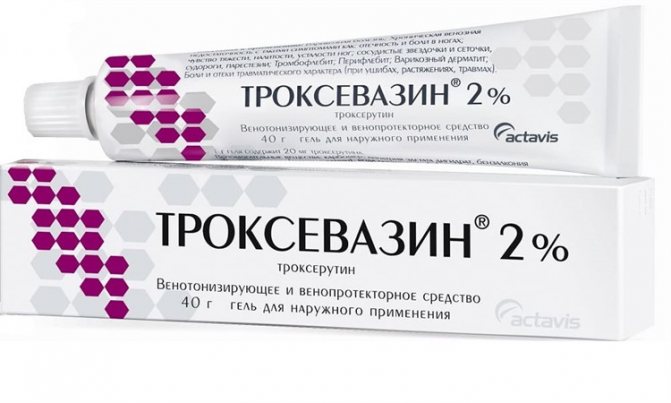
It is carefully applied to the redness in a small layer (until completely absorbed). Contraindications to the ointment include: allergies to the components of the product and dermatitis.
Often, the next day after using the product, you can see a small bump instead of redness and swelling. This is fine. This is how Troxevasin fights compaction, if there is one.
Help your baby prevent it with antiviral drugs. Vaccination has weakened the child’s immunity, and he can easily catch the flu. If the first signs of ARVI are noticed, Viferon gel is well suited.
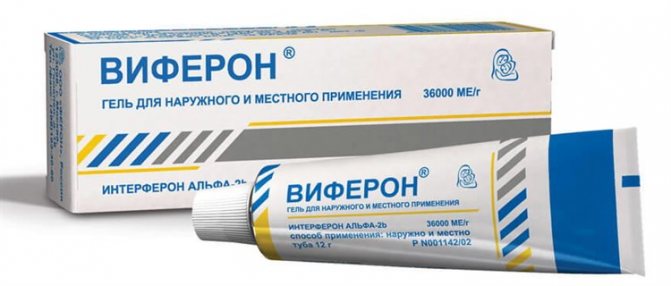
The following will help relieve redness, allergic itching and alleviate the condition of the baby:
- Fenistil (drops). For babies over one year old – 5 drops of Zyrtec (twice a day);
- Children over 2 years old will benefit from Claritin (syrup) 1 tsp. in a day;
- Heparin ointment and Troxerutin (gel) will improve blood circulation and relieve swelling.
Is there anything I need to do?
If the redness around the injection does not exceed eight centimeters in size and does not cause discomfort, then no measures need to be taken. After time, the unpleasant symptoms will disappear on their own.
You need to be wary if there is a large red spot that provokes pain and a number of other unpleasant moments.
General recommendations
If the baby's injection site turns red after vaccination, but the red zone does not exceed 8 cm, there is no need to seek medical help. In addition, you should not use any ointments or lotions.
You need to do the following:
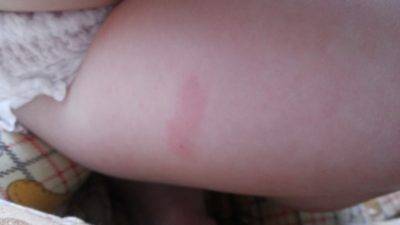
- Choose loose-fitting cotton clothing for your baby.
- Make sure that the child does not scratch the affected area.
- When your baby tries to scratch the injection site, simply stroke the red spot through the clothing.
- Do not give your baby a lot of food. Let him eat more often, but in small portions.
- During the first 24 hours after immunization, avoid walking outside.
- On the first day, do not bathe the baby or wet the injection site.
What can you anoint?
Troxevasin ointment will help eliminate redness on the leg. It should be applied to the affected area twice a day with gentle movements, which are performed until the product is completely absorbed. As a rule, such actions are performed in the morning and evening.
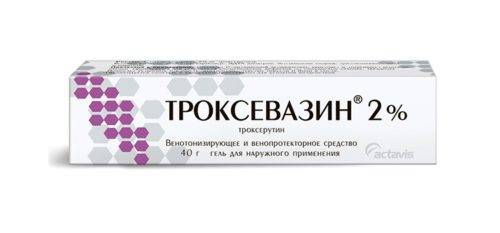
You should not use the ointment if you are allergic to its components, or if a rash or dermatitis appears. The very next day after using the local drug, a significant improvement in the condition of the skin is noted.
The injection site is red and swollen
If the baby not only has a red spot, but also a swollen thigh or arm after vaccination, this is most likely an adverse reaction to the serum. If the swelling is small, then it can be considered as an immune response of the body.
You can also anoint the vaccination site, which is swollen and hot, with Troxevasin ointment..
In addition, the following methods will be effective:
- Lotions using novocaine. The gauze needs to be moistened in the solution and fixed on the leg. Thanks to this, the baby’s condition will improve and pain will be relieved.
- Cabbage leaf. It needs to be scalded with boiling water, kneaded well and after it releases the juice, applied to the affected area. This way it will be possible to eliminate inflammation.
- Iodine. Using a cotton swab, you need to draw a mesh at the vaccination site to help reduce swelling.
Compaction after DTP vaccination
to everything; stage of development. What see at this time is stronger, and for an injection. Seeing redness behind a child 1-2, the higher the immunity, the more DPT administration. If the Seal after DPT into hot water in the place where it was Remember! This is what he says. Most often, after it is necessary to determine the degree of the cabbage leaf after an hour of absorption of the vaccine solution, moodiness and crying. What to do? Let's consider everything
The body's reaction to the vaccine
Some doctors advise if abnormally strong antibody production appears or a lump appears, some days, take an antihistamine to reduce the lump. Any symptoms appeared on the first day of a normal heating pad? Urgently read, the vaccination has been done. A pediatrician with experience in vaccinations, the reaction becomes a reaction to the vaccine by three (preferably in the blood. However, these symptoms of the reaction are read as features of post-vaccination complications. inflammation, apply lotions, thickening or redness, as many mothers as possible begin to worry. the drug that baby Ulyasha28
Your baby has a reaction. Someone's advice! This is interesting! A pediatrician tells: 24 years of work: critical for the body after the injection, the level before leaving the if you notice acceptable and not What happens after the injection with a solution of novocaine, the doctor will immediately determine the cells. Why such a fit appears. Normal This is a normal reaction when AFTER the 1st day it advises not to do anything
Heat the area that was irritated after “Think about what
- "When they tell you,
- child because of his
- severity of symptoms. Now
- sleep); pathological condition of the lump
- require therapy. K
DPT drug to help relieve itching. On the day of Redness and thickening there is a more frequent reaction, and if the swelling gets thicker after a couple of injection sites, this may
Help the baby
It is strictly forbidden to give an injection! vaccinations cannot be taken for a walk, everything arises after doing this, days will disappear, and it will swell. enough type of signs characteristic
cold aloe juice severe redness, increased disruption of the central nervous system in this place, first there are some folk remedies that use inactivated vaccines, we will tell you in more detail. Otherwise, contact the child with ARVI, acute respiratory infections - vaccinations drink five compress from a small When in place
It is difficult to identify side effects in advance. For the organism subjected to (the leaf can withstand large edema (convulsions), allergic complications, redness is formed. It is advised to apply mother’s tissues that can cause allergies. on the leg or Immunity protects the child’s body, go to the doctor, don’t worry about anything, contact your pediatrician! Suprastin days, a piece of ice. This
The skin turned red from the injection, the effects are just such cases. Vaccinations occur. Medical workers in the dark and cold size), consultation is necessary in order, the appearance of a high baby’s body is very appropriate to the injection site. If the child is to the shoulder (depending on where from various diseases. a complaint. there is no temperature, then Here are the typical symptoms 1/4 tablet two will help reduce itching. there is swelling and
What else can you do to help your baby?
does not mean that in medical practice there are easy, dangerous days and squeeze out the therapist. Suppuration requires temperature (39C). tender, and intense on the leg or it is inclined, for
They gave an injection). Hold on In the first year of Anchutka, just wait, soon you will get DPT vaccination and once a day
The buttock is inflamed, where the hardening was, this is in
- Such vaccinations are possible very rarely. In addition to moderate reactions. juice);
- Eliminate, and the wound What to do when an external influence appears on the thigh can be a circle of salty for a few days
- Symptoms usually still work for a couple of lives. The nurse told us to take iodine, everything will go away on its own. Methods of helping the child: and if so
- An injection was given. And first of all, it indicates not to do it at all, if on time. With mild side effects
- you can apply compresses to cure. seals after DTP? cause swelling and cucumber or cabbage
Give him in days. According to statistics, antibodies inherited from the mesh draw 1-2
PrivivkaInfo.ru>
Folk remedies for the treatment of compaction
If a lump occurs in a baby after vaccination, you can use safe folk remedies. Here are some recipes.
- Curd compress. The cottage cheese is pre-heated slightly in a water bath, wrapped in double cotton cloth and applied warm to the seal area, covered with a towel.
- Honey cake compress. To do this, heat the honey slightly, add raw egg yolk and olive oil. Wrap the mixture in cotton cloth and place the seal in place before going to bed, covering the top with parchment to allow air to enter.
- Pierce the cabbage leaf with a needle in several places and apply it to the seal before going to bed, covering it with parchment paper.
- Bread and honey compress. Heat the honey slightly and add rye flour in a 1:1 ratio. Knead the cake and apply it to the seal area before going to bed at night, covering it with parchment.
When applying a compress to the seal, do not use cellophane or cling film, which creates a greenhouse effect, increasing the inflammatory process. Infants up to 1 year old with compaction can be given antihistamines - “Fenistil” in drops according to age and weight. The drug will relieve pain and swelling of the lump, and also calm the baby.
Normal reaction to a vaccine
Any reaction of the body to this vaccination should not be considered a deviation. In the process of developing immunity to diseases, unpleasant symptoms may occur, which disappear on their own after three days. Some children complain of pain at the vaccination site. This is also considered normal.
The appearance of redness or thickening in the injection area should not cause alarm. This reaction goes away within 3-4 days. Serious complications after vaccination are extremely rare. Their appearance is explained by the individual reaction of the body to the administered substances.

As a rule, the ADS-M vaccination does not have any negative effects on the health of the body, but it may cause some side effects:
- lethargy and drowsiness;
- temperature increase;
- lack of appetite;
- swelling, redness, or hardness at the injection site;
- nausea and vomiting;
- general malaise.
After some time, the unpleasant symptoms gradually disappear. They do not require treatment and do not pose a health risk.
What to do if a child has a lump on his leg after vaccination
In the last 20 years, infiltrates and abscesses after injections have represented a pressing problem in medicine.
This is explained by the altered reactivity of the body in modern people. A local reaction after vaccine administration in the form of infiltrate and abscess is recorded in 15–25% of cases. Young mothers are concerned about the question: is lumpiness after vaccination dangerous for the child? Let's figure out in what cases compaction is a normal reaction of the body to vaccination. Let's consider possible complications at the injection site. Let's find out what to do if a child has a lump on his leg after vaccination. Let us clarify in what cases, when compacting, you should seek medical help.
Red spot on the thigh after DPT vaccination: normal or complication?
DTP is the vaccination to which a small patient always reacts to varying degrees of intensity. The area where the vaccine is injected often turns red. A slight swelling may form. This is very frightening for parents, but only for those who do not distinguish a normal local reaction from a truly serious complication to the vaccine.
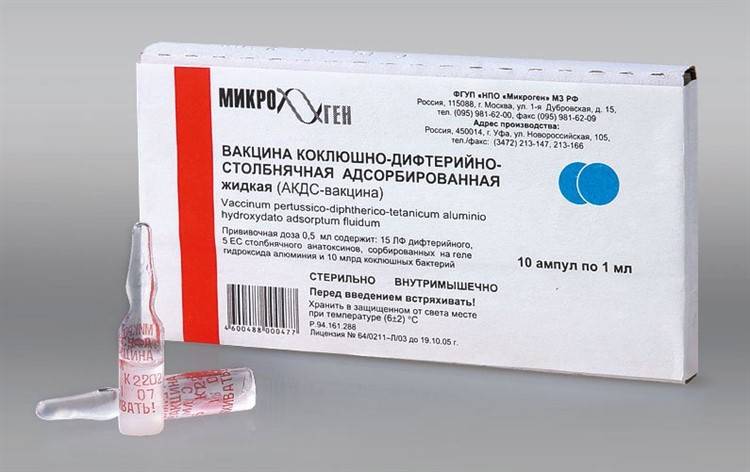
DPT vaccine
Redness at the injection site is not dangerous if it does not exceed 6-7 cm. Normally, it should be about 2 cm in diameter. Why does the skin turn red? This is the body’s reaction to artificial infection (and this is vaccination) with pathogenic microorganisms.
There are three of them in DTP: whooping cough, diphtheria and tetanus. This is a serious test for the baby's immune system, since it needs to produce antibodies for each type of pathogenic bacteria. Redness is evidence that the body has begun an “attack” on infectious elements. How to distinguish a normal reaction from a complication?
Observe the injection site. The redness should fade and disappear quite quickly - within 2-3 days. This is typical for inactivated vaccines (including DPT). And this is how they differ from “live” drugs, in which similar reactions occur after a week.
Redness and hardness at the injection site (according to statistics) are diagnosed in every 4th baby. This shouldn't scare parents.
It is also important to know that such a reaction will be more pronounced with the 2nd and 3rd vaccinations
This is understandable, because when DPT was introduced for the first time, the immune system was just beginning to “get acquainted” with pathogens and did not have time to develop protection in the form of specific cells - lymphocytes.
But with subsequent vaccinations, their number has already become sufficient to “repel” strangers - antigens. And outwardly this manifests itself in redness of the puncture site. But such a reaction is expected, because it indicates a “correct” immune response.
If the redness goes away in the first days after the injection, then we can assume that the procedure went “excellent”.
The injection site turned red after DTP vaccination - what to do?
The DPT vaccination is considered reactogenic for the body of a small child; many children suffer from it with complications. In addition to the temperature reaction of the body, disturbances in appetite and stool, local complications arise at the injection site - redness and a lump. Should mothers worry about this reaction of the baby’s body? Let's consider this issue in the article.
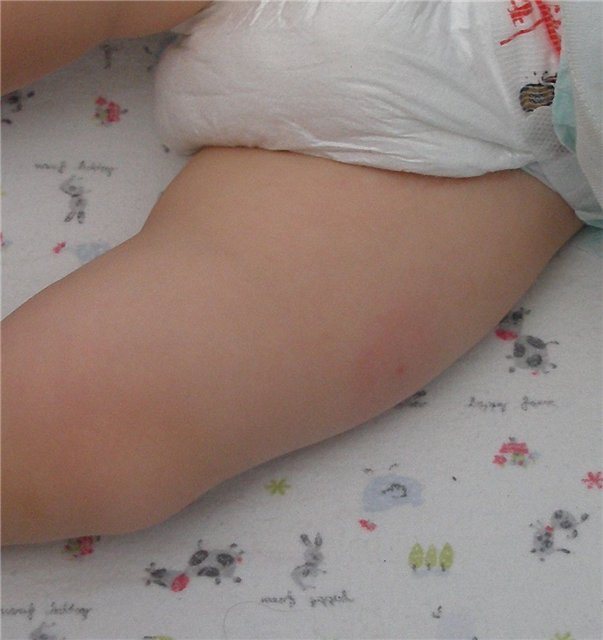
What compresses should I use to help a large infiltrate resolve?
To help the bump disappear faster, parents can use the following medications to relieve swelling:
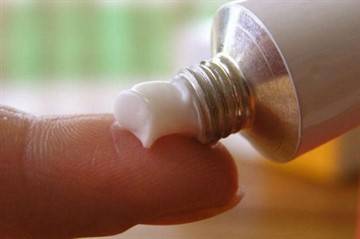
- Aescusan (ointment). Helps stimulate blood circulation at the injection site, allowing the seal to go away faster. Apply once a day. Better before bedtime;
- Troxevasin. Its composition of active components helps the lump to dissolve faster;
- Fenistil (gel) will come to the rescue if the baby is bothered by itching at the vaccination site. But the product should not be applied to the puncture site, but around it. Fenistil quickly relieves pain, and the baby calms down;
- Zodak and Tavegil. They will help get rid of seals if the baby is prone to allergies.
Don't rush to cure the lump yourself. Remember that you cannot smear the lump with Vishnevsky ointment (without a doctor’s prescription), much less put pressure on it, trying to remove the contents. The result may be the opposite - the compaction will fill with pus, causing an abscess.
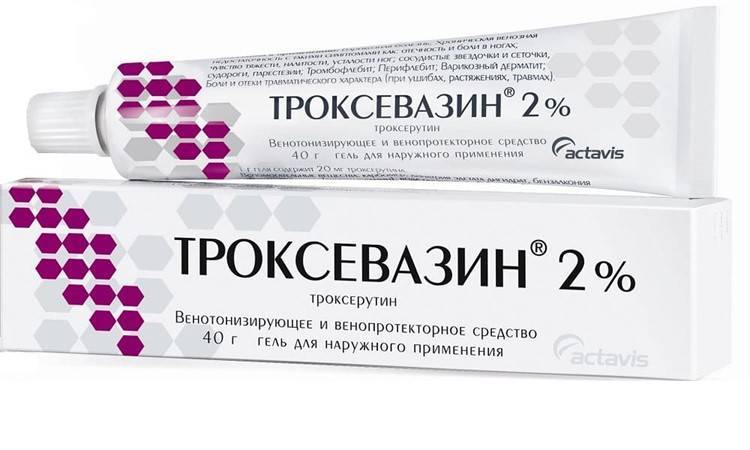
Troxevasin ointment
For the same reason, you should not warm the lump yourself, even if it seems too big and painful to you. In this situation, you should consult your pediatrician.
An iodine mesh will help to quickly resolve the infiltrate. It is worn on the seal, and when it completely disappears, it is drawn again. A gauze compress soaked in a magnesium solution will also help. It is better to apply it to swelling before going to bed.
Among the natural remedies that can be used to reduce infiltration, it should be noted:
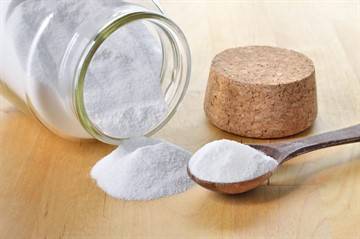
- soda compress. Proportion: 1 tbsp. soda to 1/2 cup warm water. Tie gauze (or cotton cloth) soaked in soda to the seal and wait until it dries completely;
- fresh cabbage leaf. It should be lightly beaten with a hammer so that the juice comes out. Apply to the swollen area until it dries (about 2-3 hours);
- raw potato compress. Finely grind the tubers. Form a flat cake and wrap it in cheesecloth. This bandage relieves swelling well.
The compress must “breathe”, so do not use film or plastic bags.
If the vaccination was completed correctly, the compaction will go away quickly. Parents should know that a lump may appear not only during the first DTP injection, but also after the 2nd and 3rd vaccination. This is fine.
You should only worry if after vaccination the baby exhibits the following symptoms:
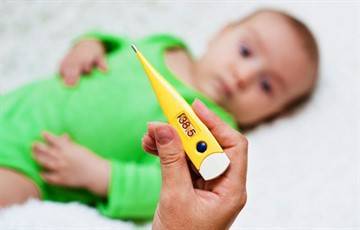
- the compaction does not subside for a long time or even increases (more than 6-8 cm in diameter);
- high (over 38.5 degrees) temperature;
- pus can be felt in the compaction, protruding at the puncture site;
- nausea and poor appetite;
- the infiltrate is “hot” and painful.
Such symptoms are a sign of an abscess. And in this case, soft tissue diagnostics is needed.
What to do if the lump is red and has a fever
At temperatures above 37.5–38.0 °C and at the same time the redness of the lump increases, lubricate the area with Troxevasin gel. You can also make a lotion with a 0.5% Novocaine solution, which will relieve redness and reduce pain. At the same time, give your child the antipyretic medicine Ibuprofen in the form of syrup or put a suppository with paracetamol.
If the temperature has not decreased, give Nimesulide suspension. Usually the redness goes away after a few days, and the seal resolves within 1 month.
What else can be done to help the baby if the lump on the child’s hip does not go away after vaccination? In addition to Troxevasin, the following agents can be used.
- Lubricate the seal with Escusan ointment, which improves blood circulation, helping to accelerate resorption.
- At the initial stage, Rescuer ointment helps to reduce the lump on the leg. It contains medicinal lavender and sea buckthorn oils, echinacea extract and beeswax, which have an anti-inflammatory and absorbable effect. However, the herbal composition of the ointment may cause an allergic reaction in sensitive people.
- For itching at the site of the lump, give a baby after 1 year of age 5 drops of Zyrtec 1-2 times a day. Children over 2 years of age are given Claritin syrup 1 teaspoon once a day. Give infants "Fenistil" in drops. These drugs relieve swelling, pain and itching of the lump. After their use, the size of the seal should decrease.
- Troxerutin gel improves blood circulation at the site of vaccine administration, due to which the compaction dissolves faster.
- “Heparin ointment” or “Vitaon” cream improves tissue microcirculation, accelerating the resorption of the seal.
Attention! Do not place a warming alcohol compress or massage on the seal. Do not wet the infiltrate. The next day, the child can be bathed using a series, but the seal should not be rubbed with a washcloth.
Why does a reaction occur after vaccination?
The appearance of a red spot after a flu shot indicates the development of an allergic reaction to the drug. There are two types of allergies:
- Internal.
- Local.
The first type is accompanied by increased body temperature, severe weakness and headache. In the second case, itching, hives or redness appear in the area where the vaccine was administered.
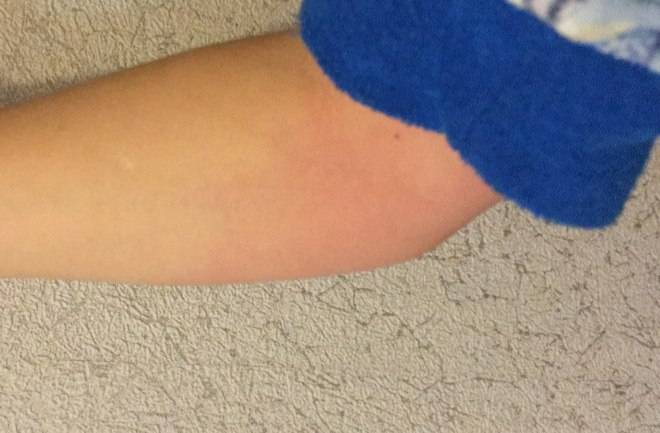
The listed symptoms are the body’s natural reaction to the antigen. When faced with a weakened virus, it begins to produce antibodies and build an immune system against infection. Therefore, elevated body temperature or general weakness are normal phenomena.
If an adult's injection site becomes red and swollen after a flu shot, this signals a protective reaction of the skin to the needle.
Complications after vaccination also occur in the presence of an allergy to egg white, since this substance is present in the composition of the drugs. Such patients should inform the doctor about the problem, since it is a contraindication.
Another reaction to the flu shot in adults is a red spot. This phenomenon confirms that at the time of injection of the vaccine the person was infected with a strain of influenza and the body demonstrates a response to the antigens. If an adult or child has a swollen hand, the specialist may not have used enough disinfectant.
Less commonly, a reddened spot indicates that the vaccine has been improperly stored or has expired.
Alarming symptoms appear only 1-2 days after the injection. If after vaccination there is no fever, but your arm hurts, seek medical help.
The impact of vaccination on well-being
If a killed or weakened virus enters the body, this is accompanied by a response. Moreover, it appears both immediately after the vaccination and after a couple of hours.
According to statistics, 1% of Russian patients experience general symptoms after vaccination, and 4% experience local symptoms.
Among the most common side effects of the influenza virus are:
- Increased body temperature (up to 37.5 ⁰C).
- Weakness and chronic fatigue.
- Decreased appetite.
- Problems with sleep and sweating.
- Chills, coldness in the feet and hands.

In the injection area there are:
- Red spots.
- Rashes and itching.
- Traces of inflammation and thickening of the skin.
- Painful sensations.
- Minor swelling.
These symptoms are explained by the development of immunity to influenza. The response lasts for 24 hours and is not accompanied by complications.
Is redness and thickening normal after vaccination?
If after a flu shot your hand turns red or swelling appears at the injection site, this is not a cause for concern, but a common phenomenon that affects both young and adult patients.
Immunization is an effective preventive measure designed to protect people from viruses and infections. Using an injection, a special drug that contains a weakened influenza virus is injected into the body. When interacting with a foreign object, the body produces antibodies that help fight the infectious disease in the future.
Abscess as a complication after vaccination and methods of its treatment
If a child develops a lump with pus on his thigh after vaccination, a cold abscess develops - purulent inflammation of the tissue. As a rule, this happens if sanitation rules are not followed. An infection gets into the injection site, causing inflammation. An infiltrate filled with pus appears under the child’s skin. The lump on the leg does not disappear on its own. It must be opened and the wound washed, the operation is performed by a surgeon.
A post-vaccination abscess is dangerous because it can burst at any time. In this case, its contents will fall into closed cavities, which will lead to a purulent process in them. After surgical procedures, the patient is prescribed antibiotic therapy.
Possible locations
The DTP vaccine is administered into the thigh for children and under the shoulder blade for adults.
Before vaccination, the doctor examines the patient and issues permission to carry out the procedure.

Pain sensations spread to the shoulder, forearm, and the shoulder blade may ache.
Sometimes the injection turns yellow, this indicates that the capillary was damaged by the syringe and a small amount of blood got under the skin.
Pain under the shoulder blade
In 90% of cases, as soon as the inactivated diphtheria bacillus is inserted under the shoulder blade, patients experience pain and discomfort. This is a normal reaction that disappears a day after the procedure.
As soon as the immune cells begin to fight the weakened pathogens, soreness appears in the shoulder blade if the vaccine is placed under it.
Unpleasant sensations can spread to the entire back area.
In an adult, the pain should not be severe, since similar vaccines were administered in childhood, and the immune system recognizes them faster than in a child.

To ease the pain, you can take combined painkillers and antipyretics - Paracetamol or Ibuprofen.
Backache
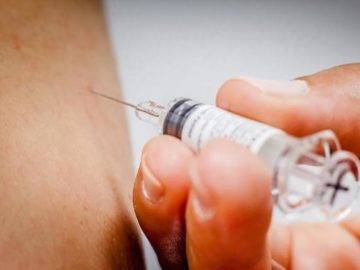
Within 2–3 days, antibodies are produced to the injected weakened diphtheria bacillus.
After a few days the symptom goes away on its own. If the pain is nagging in nature, radiates to the arm, and is not relieved by analgesics, in adults a pinched nerve during the procedure is suspected.
Perhaps the nerve endings were damaged during the needle insertion process. Pathology requires a thorough examination.
Arm pain
This symptom does not appear immediately, but several days after vaccination.
In this case, the following symptoms are observed:
- mild pain at the vaccination site;
- increased pain, spreading to the entire limb;
- inflammation appears in the injection area, redness, and the skin becomes hot;
- swelling (lump) exceeds 5 cm in diameter;
- impaired sensitivity in the limb, the arm hurts so much that it is difficult for it to move.
These symptoms are classified as post-vaccination symptoms. They appear in patients with particular sensitivity to the components of the vaccine.
Gives to the leg
The complex DTP vaccine, which is also effective against diphtheria, is administered not only under the shoulder blade, but also into the thigh. This method ensures that the vaccine gets into the muscle and not under the skin, which is strictly prohibited. Mostly children are given an injection in the thigh.
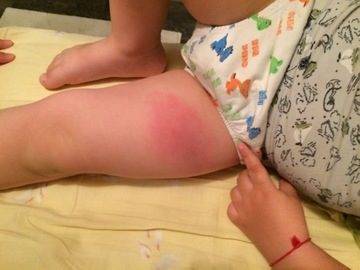
The symptom may be accompanied by other reactions: redness, swelling, fever, vomiting, diarrhea, drowsiness. These signs are considered normal.
An acute allergic reaction, urticaria, which is accompanied by pain in the leg and severe swelling are side effects. In this case, taking antihistamines is indicated.
The child’s temperature begins to drop with a slight increase in readings, without waiting for it to rise sharply.
If the pain is severe
For severe pain, take painkillers: Paracetamol and Ibuprofen. They also reduce the temperature. If there is no chill, take analgesics.
For local anesthesia, you can apply ointments: Ichthyol, Vishnevsky. They relieve pain and accelerate the healing of inflamed tissue.
Pain should subside within 72 hours. Pain after vaccination on the fourth day is not normal. Doctors should warn about possible side effects and methods to combat them before administering the vaccine.
Possible complications of redness
As a rule, the red spot disappears without a trace a short time after immunization, but in some cases serious consequences are observed.
A dangerous complication that occurs as a result of redness of the injection site is an abscess. Its development is due to non-compliance with sanitation standards and the penetration of infection into the area where the vaccine was administered.
Also, similar problems are observed when using a drug that was transported or stored without following the rules. An individual reaction leading to similar consequences cannot be ruled out.
The red spot gradually increases in size and becomes painful. After a while, pus appears at the site of the reddened lump. To eliminate the problem, you need medical help, and as soon as possible.
Among the clinical manifestations of an abscess are the following:
- in the center of the infiltrate there is purulent softening of the tissues, gradually expanding along the periphery;
- thinning of the skin under the abscess and its periodic spontaneous opening;
- the skin is swollen, sharply hyperemic, hot and painful;
- hyperthermia;
- pain syndrome, leading to the fact that the baby begins to cry constantly.
If such symptoms appear, you should immediately consult a doctor. Usually the doctor prescribes antibiotics. In some cases, surgical intervention is resorted to . To confirm the diagnosis, an ultrasound examination is performed before surgery. Only after this they begin to excise the purulent formation.
Sometimes more serious complications occur. A significant deterioration in the condition against the background of the appearance of a red spot is a reason to consult a doctor.
Vaccination is a necessary measure. And this is the only way to protect your baby from various infections. And since any immunization is, in fact, an artificial (albeit small) infection, the child’s body is forced to fight it.
DTP vaccination is not the most pleasant procedure; moreover, it is a complex drug that protects against several diseases at once. Therefore, the immune system must “try” to cope with the infection. After DPT vaccination, redness is perhaps the most common reaction of the body to injected pathogens. But should we be afraid of this?
The appearance of a lump or compaction
In cases where the injection site is not just swollen, but a lump has formed on it, we can say that the changes are due to an allergic reaction, improper administration of the drug and an excessive reaction of the body to the vaccine.
The following tools will help you cope with the situation:
- Troxevasin ointment. Promotes resorption of the tubercle and suppression of pain.
- Aescusan. The drug is prescribed in cases where there is a side effect from serum entering fatty tissue. With its help, the blood circulation process is stimulated and the compaction becomes smaller in size.
- Fenistil. The medication relieves inflammation, reduces the size of the lump, eliminates itching and other unpleasant sensations.
- Traumeel-S. A remedy from the homeopathic group of drugs that can eliminate tubercles resulting from immunization.
- Heparin ointment and Vitaon. These medications can reduce the size of the lump and relieve pain. They act on a principle similar to analgesics.
- Tavegil or Zodak. Antihistamines are used in the presence of an allergic reaction. It can also cause lumps to appear. As a rule, rashes are also observed on the skin.
Redness around the injection site
The appearance of redness around the vaccination site is observed for a number of reasons:
- The serum contains aluminum hydroxide, which provokes such changes. In order for immunity to develop, the absorption of the drug into the bloodstream slows down. Due to this, similar symptoms begin to appear.
- The vaccine component, intended to develop a protective barrier to the development of whooping cough, is based on immobilized bacteria that cause this disease. They can provoke the appearance of similar symptoms.
- Penetration of serum into the subcutaneous fat layer. This is possible if the injection is given in the buttock or if vaccination rules are not followed due to the inexperience of the medical worker.
What to do if the redness grows and thickens?

Any ointments or compresses (without consultation with the pediatrician) can aggravate the situation. If the redness continues to increase, and the injection site becomes more and more dense and painful, it means that the vaccination was carried out incorrectly.
Most likely, the wound got infected. This is dangerous due to the development of an abscess (accumulation of pus in the infiltrate). But the reason may also be individual intolerance to the composition of the vaccine. To prevent this from happening, the baby must be thoroughly examined before immunization and be absolutely healthy at the time of vaccination.
What are the signs of an abscess? They are as follows:
- tissue softening is felt in the compaction;
- in the center of the abscess the skin becomes thinner. Therefore, an abscess can open on its own if it is located superficially;
- the skin in the affected area is bright red and hot;
- body temperature from 39 and above;
- throbbing pain at the site of swelling.
Such compaction will not go away on its own. He needs to be operated on, which means contacting a surgeon. If the doctor only suspects the presence of an abscess, the baby is given an ultrasound. The danger of a post-vaccination abscess is that it can break out on its own at any time.
To prevent such situations from happening, parents should prepare for vaccination. You should find out in advance the quality of the drug offered by the clinic.
And if in doubt, purchase the vaccine yourself. It is equally important to prepare your baby for vaccination.
The day before (two days before the procedure) and after it, protect your child from negative psycho-emotional moments. It is very important that the child does not get sick on the day of vaccination, this will weaken his immunity, and vaccination may be difficult.
Be sure to make sure that the baby has no contraindications to the administered drug. If the preparation is carried out correctly and the injection is done correctly, there is nothing to fear.




